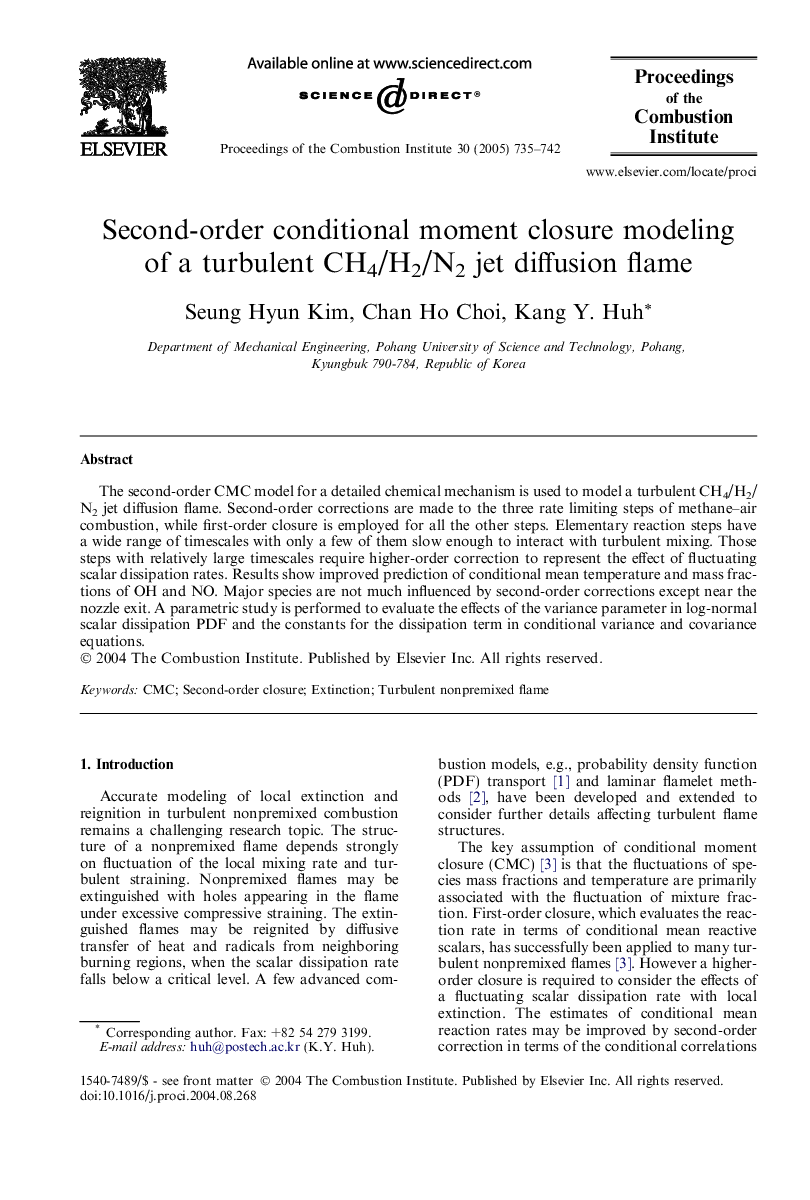| Article ID | Journal | Published Year | Pages | File Type |
|---|---|---|---|---|
| 9637397 | Proceedings of the Combustion Institute | 2005 | 8 Pages |
Abstract
The second-order CMC model for a detailed chemical mechanism is used to model a turbulent CH4/H2/N2 jet diffusion flame. Second-order corrections are made to the three rate limiting steps of methane-air combustion, while first-order closure is employed for all the other steps. Elementary reaction steps have a wide range of timescales with only a few of them slow enough to interact with turbulent mixing. Those steps with relatively large timescales require higher-order correction to represent the effect of fluctuating scalar dissipation rates. Results show improved prediction of conditional mean temperature and mass fractions of OH and NO. Major species are not much influenced by second-order corrections except near the nozzle exit. A parametric study is performed to evaluate the effects of the variance parameter in log-normal scalar dissipation PDF and the constants for the dissipation term in conditional variance and covariance equations.
Related Topics
Physical Sciences and Engineering
Chemical Engineering
Chemical Engineering (General)
Authors
Seung Hyun Kim, Chan Ho Choi, Kang Y. Huh,
